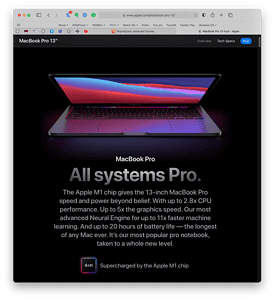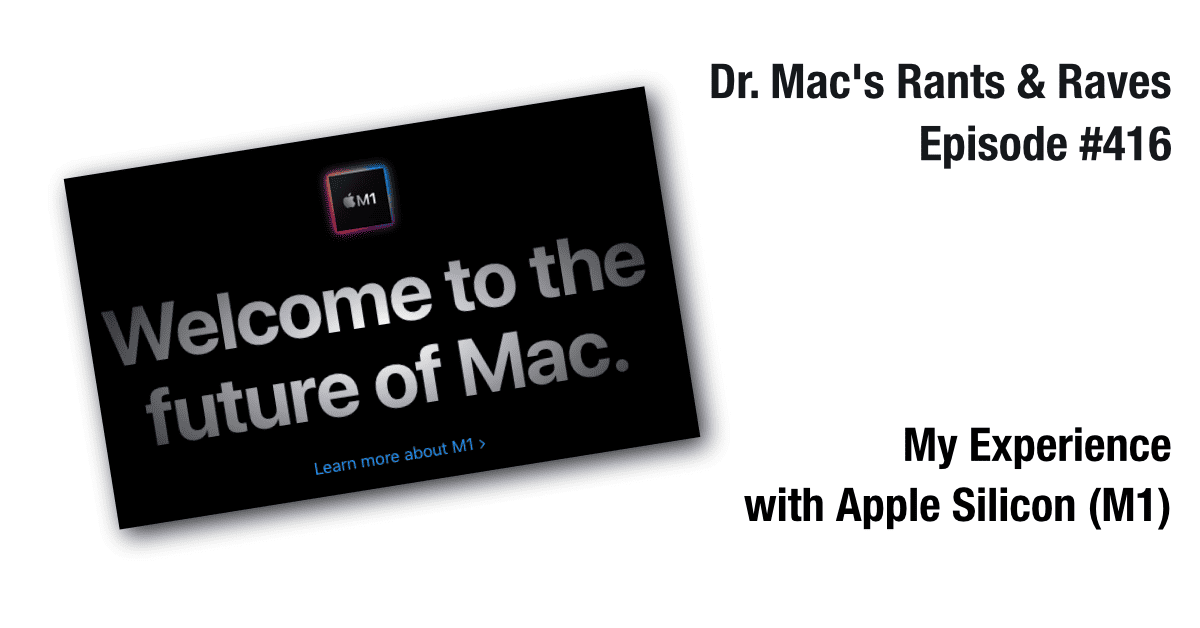Apple will transition its Mac computers from Intel processors to its own custom processors over the next two years. There are currently three Mac models available with Apple’s M1 processor: 13-inch MacBook Air (starting at $999); 13-inch MacBook Pro (starting at $1,299); and Mac mini (from $699).
While my late 2013 MacBook Pro still works perfectly, I’m ready for something faster and more battery efficient. But when I tried to order an M1 MacBook Pro earlier this month I wanted one with 16GB of RAM and a 1TB SSD ($1,899). Sadly, that configuration wasn’t available until mid-January (now early February). The closest thing I could get today was a MacBook Pro M1 with 8GB RAM and a 512GB SSD for $1,499.
Was Eight (GB) Enough?
I was concerned 8GB of RAM wasn’t enough for my workflows, but knowing Apple offers 14-day returns, I picked it up at the Apple Store a couple of hours later.

I loved it. It was much faster than my 2013 MacBook Pro with a 2.6 GHz Quad-Core Intel Core i7 processor and 16GB RAM in almost every way. It started up in half the time and woke from sleep without delay. Apps launched noticeably faster and my most demanding tasks — editing video in Final Cut Pro, working with high-resolution images in Affinity Photo and Pixelmator Pro, and recording and producing music with GarageBand and Logic Pro — took less time than ever before.
The M1 MacBook Pro was also noticeably quieter and gave me almost 3X the battery life. I also loved the Touch ID sensor, which was faster and easier than typing my password a million times a day.
Rosetta 2 (Mostly) Just Works
Since the M1 chip’s architecture is so different from an Intel processor, software needs to be updated by its developer to run natively on M1-based Macs. While all Apple software has been updated to Universal and run natively on M1 systems, not all third-party software has. Fortunately, Apple’s Rosetta 2 technology runs most existing Mac apps with virtually no effect on their performance.
I was impressed with Rosetta 2 and had no issues with most of my applications and utilities—almost everything “just worked.” And, despite a few hiccups such as infrequent kernel panics (crashes) and an occasional inability to empty the Trash, I loved it.
Everything Was Great Until…
Its final test was a live presentation to Austin’s CapMac user group using Zoom and mimo Live, which have yet to be updated to Universal, along with Apple’s (Universal) Keynote. Everything worked flawlessly for nearly 75 minutes. In fact, I remarked several times that I was impressed by how nicely everything worked with only 8GB of RAM and Rosetta 2.
Then I saw a brief alert about running out of memory and the Mac crashed. Since M1 models aren’t upgradeable, I returned it. Since the configuration I want won’t be available until February, I’m going to wait for additional options like iMacs and Mac Pros with Apple processors.
